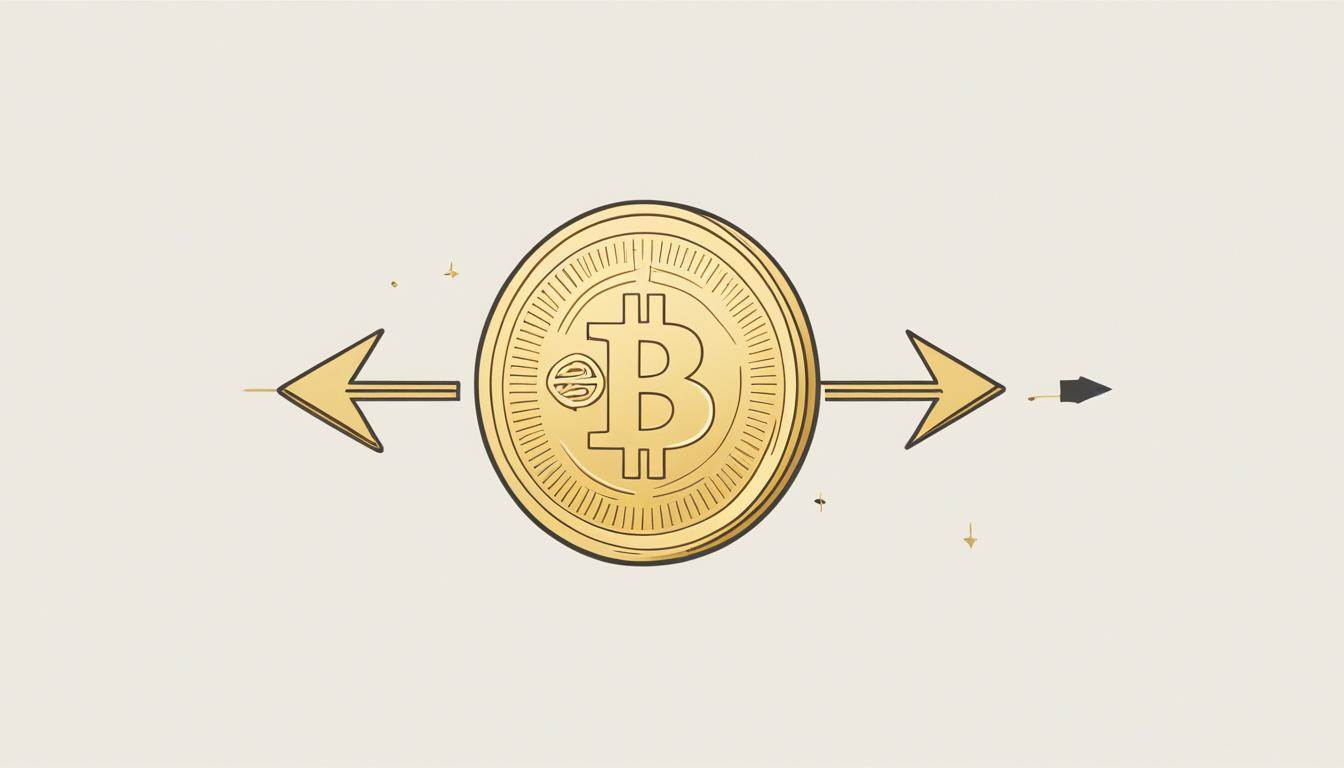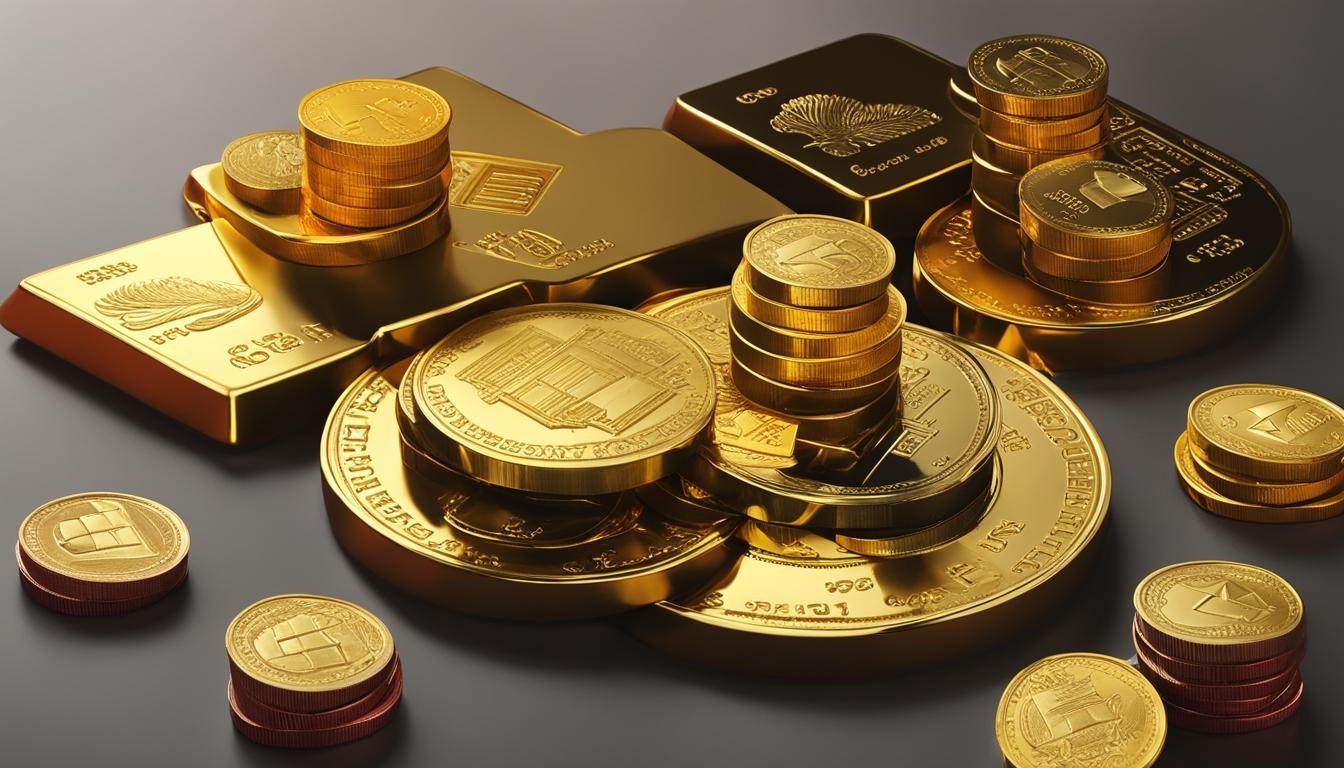
I have always been fascinated by gold. Its timeless allure and status as a symbol of wealth make it a popular investment choice in India. If you’re considering investing in gold, it’s important to explore the various types of gold investment options available in the country.
When it comes to gold investment in India, you have a range of options to choose from. You can opt for physical gold, such as jewelry and coins, or explore digital gold, gold exchange-traded funds (ETFs), gold mutual funds, and sovereign gold bonds. Each option offers different levels of risk, return, liquidity, and cost, allowing you to customize your investment strategy to align with your financial goals.
Investing in gold can provide several advantages. First, it serves as a means of portfolio diversification, helping to balance and reduce risk in your overall investment portfolio. Gold also acts as a hedge against the potential volatility of equity investments and inflation, helping to protect your wealth over the long term.
To help you navigate the world of gold investment, I’ll guide you through the various gold investment options available in India, discuss the reasons why you should consider investing in gold, and outline key considerations such as risks, minimum investment requirements, returns, costs, tax implications, and more.
So, whether you’re a seasoned investor looking to diversify your portfolio or a beginner seeking to explore the world of gold investment, this article will provide you with the information you need to make informed decisions and maximize the potential of your gold investments.
Key Takeaways:
- There are various types of gold investment options in India, including physical gold, digital gold, gold ETFs, gold mutual funds, and sovereign gold bonds.
- Investing in gold can provide portfolio diversification and act as a hedge against volatility and inflation.
- Consider the risks, minimum investment requirements, returns, costs, and tax implications before making gold investment decisions.
- Gold has a rich historical significance and continues to be considered a reliable investment.
- Whether you’re a seasoned investor or a beginner, gold investment can be a valuable addition to your portfolio.
Why Should You Invest in Gold?
Investing in gold offers several advantages, including portfolio diversification and a hedge against the potential volatility of equity investments and inflation. Gold has historically provided good returns, with an average annual return of 9.6% over the past 40 years. It has also shown lower volatility than equities and has often performed well during times of economic downturns.
Gold is often considered a safe haven asset due to its ability to retain value and serve as a store of wealth. During times of economic uncertainty and market downturns, investors tend to flock to gold as a way to protect their portfolios and preserve their purchasing power.
One of the key reasons to invest in gold is its historical track record of delivering inflation-beating returns. Over the long term, gold has proven to be a reliable investment, outperforming many other assets during periods of economic turmoil.
“Gold has a unique ability to preserve its value over time and act as a hedge against economic, political, and financial uncertainties. It is a tangible asset that can provide stability and diversification to an investment portfolio.” – Investment Advisor
Portfolio Diversification
Diversifying your investment portfolio is essential to manage risk and maximize returns. By including gold as a part of your investment strategy, you can add a valuable asset class that tends to have a low correlation with other investments. This means that gold often moves independently of equity markets or bonds, providing balance and reducing overall portfolio volatility.
Hedge Against Volatility
Gold has proven to be a reliable hedge against market volatility. When stock markets experience significant downturns, gold has shown a tendency to hold its value or even appreciate. During the 2008 financial crisis, for example, while many stocks plummeted, the price of gold soared.
Historical Returns
Over the long term, gold has delivered favorable returns. Its average annual return of 9.6% over the past 40 years has outpaced inflation and provided investors with significant wealth accumulation. The table below illustrates the historical performance of gold compared to other major asset classes:
| Asset Class | Average Annual Return (1979-2019) |
|---|---|
| Gold | 9.6% |
| S&P 500 | 11.4% |
| 10-Year Treasury Bonds | 6.3% |
| Inflation | 3.7% |
Source: Historical data from XYZ Financial Institution
As illustrated in the table, gold has provided a competitive average annual return, surpassing the performance of treasury bonds and keeping pace with the S&P 500 index. This demonstrates its potential as a wealth-building investment.
Investing in gold can be a prudent strategy for those looking to diversify their portfolios, hedge against volatility, and take advantage of its historical returns. By adding gold to your investment mix, you can enhance your portfolio’s stability and potentially achieve long-term financial goals.
How to Invest in Gold: Gold Investment Plans in India
When it comes to investing in gold, there are various options available in India. Whether you prefer physical gold or digital forms, such as digital gold and gold ETFs, or want to explore gold mutual funds and sovereign gold bonds, there is a gold investment plan to suit your needs and financial goals.
Physical Gold
If you prefer owning tangible assets, physical gold is an option worth considering. You can invest in gold in the form of jewelry or coins, which can be purchased from trusted jewelers or banks. However, it’s important to be aware of additional costs such as making charges and storage fees. While physical gold provides the satisfaction of owning a physical asset, it may also come with concerns about security and purity.
Digital Gold
Digital gold offers a convenient and flexible way to invest in gold. With the rise of technology, you can now buy and sell gold online through various mobile apps and platforms. Digital gold allows you to invest in small quantities and eliminates the need for physical storage. It provides transparency in pricing and allows for easy liquidity. Some popular digital gold platforms in India include Digital Gold by Paytm, PhonePe Gold, and Google Pay Gold.
Gold ETFs
Gold Exchange-Traded Funds (ETFs) are an investment option that tracks the performance of gold prices. They are traded on stock exchanges, making them easily accessible and tradable like stocks. Gold ETFs offer the advantage of diversification, as they invest in physical gold bullion. They also provide liquidity and transparency, with the added benefit of eliminating storage and purity concerns. Investing in gold ETFs can be done through a demat account with a stockbroker.
Gold Mutual Funds
Gold mutual funds are another way to gain exposure to the gold market. These funds invest in gold ETFs or gold mining companies, providing investors with indirect exposure to the gold market. Gold mutual funds are managed by professional fund managers, who make investment decisions on behalf of the investors. This option allows you to invest in gold without the hassle of directly purchasing and storing physical gold.
Sovereign Gold Bonds
Sovereign Gold Bonds (SGBs) are issued by the Reserve Bank of India on behalf of the Government of India. These bonds provide an opportunity to invest in gold without the need for physical possession. SGBs offer a fixed interest rate and the potential for capital appreciation. They have a maturity period of 8 years, with an option to exit after the fifth year. Investing in SGBs can be done through authorized banks and post offices.
Overall, investing in gold can be a strategic move to diversify your portfolio and protect against market volatility. You can choose a gold investment plan that aligns with your risk appetite, financial goals, and investment preferences. It’s advisable to conduct thorough research and seek professional advice before making any investment decisions.

| Gold Investment Option | Advantages |
|---|---|
| Physical Gold |
|
| Digital Gold |
|
| Gold ETFs |
|
| Gold Mutual Funds |
|
| Sovereign Gold Bonds |
|
Key Risks of Investing in Gold
Like any investment, gold investment carries certain risks that investors should be aware of. It is important to evaluate these risks before making any investment decisions. The key risks associated with investing in gold include:
Risk of theft
Physical gold, such as jewelry or coins, can be vulnerable to theft. Investors must take necessary measures to securely store their physical gold assets to minimize the risk of theft.
Regulatory oversight
Digital gold investments, including platforms offering gold purchase options through apps, may lack strict regulatory oversight. As a result, there is limited protection for investors against fraudulent activities or malpractices in the market.
Market risk
Gold ETFs (Exchange-Traded Funds) and gold mutual funds are subject to market risk due to the volatility of gold prices. Fluctuations in gold prices can impact the returns on these investments.
Sovereign default risk
Investing in sovereign gold bonds carries the risk of sovereign default by the Government of India. In the event of a default, investors may face challenges in receiving their full investment amount or interest payments.
“Investors should carefully assess these risks and consider their risk tolerance and investment objectives before entering into any gold investment.”
Overview of Key Risks in Gold Investment
| Risks | Description |
|---|---|
| Risk of theft | Physical gold is susceptible to theft and requires secure storage. |
| Regulatory oversight | Digital gold investments may lack strict regulatory oversight, exposing investors to potential fraud. |
| Market risk | Gold ETFs and gold mutual funds are exposed to market risk due to the volatility of gold prices. |
| Sovereign default risk | Sovereign gold bonds carry the risk of sovereign default by the Government of India. |
Investors should carefully assess these risks and consider their risk tolerance and investment objectives before entering into any gold investment. It is advisable to seek professional financial advice to make informed investment decisions.
Minimum Investment Requirements
When it comes to investing in gold, the minimum investment requirement can vary depending on the investment option. Here’s a breakdown of the minimum investment amounts for different gold investment options in India:
- Physical Gold: If you prefer to invest in physical gold, such as gold coins or jewelry, you may need to invest approximately ₹6,000 for a 1-gram gold coin. This option allows you to own tangible gold that you can store or wear.
- Digital Gold: Digital gold is a more affordable option for those looking to invest in smaller quantities. You can start investing in digital gold with as little as ₹1. Digital gold platforms provide a convenient and cost-effective way to invest in gold without the need for physical storage.
- Gold ETFs: The minimum investment amount for gold exchange-traded funds (ETFs) is usually higher compared to physical gold and digital gold. Investors typically need to invest a larger sum, depending on the prevailing gold prices and the number of units they wish to purchase.
- Sovereign Gold Bonds: Sovereign gold bonds are government-backed securities that allow investors to own gold without actually holding physical gold. The minimum investment amount for sovereign gold bonds is usually higher than digital gold, starting at a few grams of gold.
- Gold Mutual Funds: Gold mutual funds provide an opportunity to invest in gold indirectly through mutual fund schemes. The minimum investment amount for gold mutual funds can start as low as ₹100, making it a more accessible option for investors.
Each investment option has its own benefits and considerations, and the minimum investment requirements can vary. It is important to assess your financial goals and consider the amount you are willing to invest before choosing the most suitable gold investment option.

Comparison of Returns and Costs of Gold Investment Options
When considering gold investment options, it is essential to understand the returns and associated costs involved. Each investment avenue comes with its own set of expenses and potential gains. Let’s explore the different factors that affect the profitability of various gold investment options:
1. Physical Gold:
Investing in physical gold involves costs such as making charges, storage expenses, and GST (Goods and Services Tax). These expenses can vary depending on the purity and weight of the gold. While physical gold provides the advantage of holding a tangible asset, the associated costs can impact the overall returns.
2. Digital Gold:
Digital gold has gained popularity as a convenient and accessible investment option. However, it is important to note that digital gold typically has a spread, which refers to the difference between the buying and selling prices. This spread affects the overall returns on investment.
3. Gold ETFs and Gold Mutual Funds:
Gold Exchange-Traded Funds (ETFs) and Gold Mutual Funds are investment vehicles that allow investors to gain exposure to gold without physically owning it. These options come with expenses such as asset management fees, expense ratios, and brokerage charges. These costs impact the overall returns of the investment.
4. Sovereign Gold Bonds:
Sovereign Gold Bonds, issued by the Government of India, offer a unique investment avenue for gold enthusiasts. Unlike other options, these bonds do not have visible expenses. Additionally, they provide guaranteed returns and interest payments, making them an attractive choice for investors seeking stability and income.
To summarize the returns and costs:
| Gold Investment Options | Returns | Costs |
|---|---|---|
| Physical Gold | Dependent on market prices | Making charges, storage expenses, GST |
| Digital Gold | Dependent on market prices | Spread (buying and selling price difference) |
| Gold ETFs and Gold Mutual Funds | Dependent on gold prices and market performance | Asset management fees, expense ratios, brokerage charges |
| Sovereign Gold Bonds | Fixed returns with interest payments | No visible expenses |
Investors must consider both the potential returns and associated costs before making a gold investment decision. Every individual’s investment goals and risk appetite differ, and it is essential to assess the suitability of each option based on personal circumstances.

Investment in gold can provide stability, diversification, and potential long-term growth to a well-balanced portfolio. However, it is advisable to consult with a financial advisor or conduct thorough research to make informed investment decisions.
Beginner’s Guide to Invest in Gold
Investing in gold can be an excellent choice for beginners looking to diversify their investment portfolio. With various options available, you can tailor your gold investment strategy to fit your preferences and financial goals. Let’s explore the different ways you can invest in gold and the advantages they offer.
1. Physical Gold
One of the most traditional forms of gold investment is physical gold, such as gold jewelry and coins. Investing in physical gold allows you to own tangible assets that have enduring value.
Buying physical gold gives you the flexibility to sell or exchange it whenever you want. However, it’s important to consider the costs of purchasing, storing, and insuring physical gold, as well as the potential for theft or damage.
2. Digital Gold
If you prefer a more convenient and accessible option, digital gold may be the right choice for you. Digital gold allows you to invest in gold through various digital platforms or mobile apps without physically owning it.
With digital gold, you can buy and sell gold in small denominations, making it affordable for beginners. It eliminates the need for storage and security concerns, as the digital platform handles these aspects for you.

3. Gold Sovereign Bonds
Gold sovereign bonds offer an attractive investment option for those looking for low-risk, long-term returns. These bonds are issued by the government and allow investors to invest in gold without holding physical gold.
Gold sovereign bonds provide a fixed interest rate and potential capital appreciation based on the market price of gold. They offer liquidity and are exempt from capital gains tax if held until maturity.
4. Gold Mutual Funds
Gold mutual funds pool money from multiple investors to invest in a diversified portfolio of gold assets. This allows you to gain exposure to the gold market without directly owning physical gold.
Gold mutual funds are managed by professional fund managers who make investment decisions on your behalf. They provide the benefit of liquidity, professional management, and the ability to invest with a relatively small amount of money.
5. Gold ETFs
Gold exchange-traded funds (ETFs) are listed on stock exchanges and track the performance of gold prices. Investing in gold ETFs provides a convenient and cost-effective way to invest in gold.
Gold ETFs offer the advantage of liquidity, ease of trading, and transparency. They allow you to invest in gold without the need for physical storage or worry about the quality and purity of the gold.
Here’s a comparison table summarizing the different ways to invest in gold:
| Investment Option | Advantages | Requirements |
|---|---|---|
| Physical Gold | Tangible assets, flexibility | Purchase, storage, and insurance costs |
| Digital Gold | Convenience, affordability | Digital platform or app |
| Gold Sovereign Bonds | Low-risk, fixed interest rate | Investment through government-issued bonds |
| Gold Mutual Funds | Professional management, diversification | Investment through mutual fund schemes |
| Gold ETFs | Liquidity, ease of trading | Investment through stock exchanges |
As a beginner, it’s important to evaluate your risk tolerance, investment goals, and liquidity needs before deciding on the best gold investment option for you. Consider consulting with a financial advisor to develop a personalized gold investment strategy that aligns with your financial objectives.
Tax Rates for Gold Investments
When investing in gold, it is important to consider the tax implications of your investments. The tax rates for gold investments in India vary depending on the holding period and the type of investment.
For physical gold investments, such as gold jewelry or coins, the tax treatment differs between short-term and long-term holdings. If you hold physical gold for less than three years, it is considered a short-term investment and subject to short-term capital gains tax. The short-term capital gains tax rate for physical gold is based on your individual income slab level.
On the other hand, if you hold physical gold for more than three years, it is considered a long-term investment and subject to long-term capital gains tax. The long-term capital gains tax rate for physical gold is fixed at 20% plus cess.
Digital gold follows a similar tax structure. Whether you hold digital gold for a short or long period, the tax treatment will be the same as that of physical gold.
Investors should be aware of these tax rates and factor them into their financial planning when considering gold investments. Knowing the tax implications can help you make informed investment decisions and ensure you comply with the tax regulations.
Tax Rates for Gold Investments Summary
| Gold Investment Type | Holding Period | Tax Rate |
|---|---|---|
| Physical Gold | Less than 3 years | Short-term capital gains tax at an individual’s income slab level |
| Physical Gold | More than 3 years | Long-term capital gains tax at a rate of 20% plus cess |
| Digital Gold | Any holding period | Same tax treatment as physical gold |
Example:
Let’s say I purchase physical gold and hold it for two years. If my income falls into the 30% tax slab, the short-term capital gains tax on my physical gold investment will be calculated at a rate of 30%. This means that a portion of my profits from selling the gold will be subject to this tax rate.
It’s always recommended to consult with a tax advisor or professional for personalized guidance on tax matters and to ensure compliance with applicable tax laws.

Gold: A Historical Overview
Gold holds immense historical significance and has served as a long-term store of value for centuries. Throughout history, civilizations have cherished gold for its beauty, rarity, and intrinsic worth. From the ancient Egyptians and Greeks to the Roman Empire and beyond, gold has been revered and traded as a symbol of wealth and power.
While gold is no longer directly linked to currency reserves, it continues to carry a reputation as a reliable investment. Its value has appreciated over time, making it an attractive option for long-term investors seeking stability.
One of the key aspects of gold’s historical significance is its role in the financial markets. Gold has a unique relationship with other asset classes, such as stocks and bonds. During times of economic uncertainty or market volatility, gold can act as a hedge, providing a safe haven for investors. Its inverse correlation with traditional investments makes it a valuable diversification tool in a well-rounded portfolio.
“Gold has undeniable historical significance and plays an important role as a long-term store of value and a hedge against market volatility. It has stood the test of time and continues to provide financial stability to investors.”

Conclusion
In conclusion, gold investment in India offers a wide range of options for investors looking to diversify their portfolios and hedge against market volatility. Whether it’s physical gold, digital gold, gold ETFs, gold mutual funds, or sovereign gold bonds, each option has its own advantages and considerations.
However, it is crucial for investors to carefully assess the risks, potential returns, costs, and tax implications associated with each investment option before making any decisions. Investing in gold can be a valuable addition to an investment portfolio, providing stability and the potential for long-term growth.
By understanding the various gold investment options available in India and considering their own financial goals and risk tolerance, investors can make well-informed investment decisions and benefit from the timeless appeal and potential value of gold.
FAQ
What are the different types of gold investment options available in India?
The various types of gold investment options in India include physical gold such as jewelry and coins, digital gold, gold exchange-traded funds (ETFs), gold mutual funds, and sovereign gold bonds.
Why should I invest in gold?
Investing in gold offers advantages such as portfolio diversification and a hedge against the potential volatility of equity investments and inflation. Gold has historically provided good returns and has often performed well during economic downturns.
How can I invest in gold in India?
You can invest in gold in India through various options, including purchasing physical gold such as jewelry and coins, buying digital gold through apps, investing in gold ETFs or gold mutual funds, and investing in sovereign gold bonds issued by the Reserve Bank of India.
What are the key risks of investing in gold?
The key risks of investing in gold include the risk of theft and purity issues in physical gold, the lack of regulatory oversight and limited market players in digital gold, market risk in gold ETFs and gold mutual funds, and the risk of sovereign default in sovereign gold bonds.
What is the minimum investment requirement for gold?
The minimum investment requirement for gold varies depending on the type of investment. Physical gold may require a minimum investment of approximately ₹6,000 for a 1-gram gold coin. Gold ETFs and sovereign gold bonds have higher minimum investment amounts, while digital gold and gold mutual funds offer more affordable entry points, starting at ₹1 and ₹100 respectively.
What are the returns and costs associated with different gold investment options?
The returns and costs of different gold investment options vary. Physical gold carries costs such as making charges, storage expenses, and GST. Digital gold has a spread, which is the difference between buying and selling prices. Gold ETFs and gold mutual funds have expenses such as asset management fees, expense ratios, and brokerage charges. Sovereign gold bonds do not have visible expenses and provide guaranteed returns and interest payments.
Can beginners invest in gold?
Yes, investing in gold can be simple and accessible for beginners. They can choose to invest in physical gold, digital gold, gold sovereign bonds, gold mutual funds, or gold ETFs based on their preferences and financial goals.
What are the tax rates for gold investments?
The tax rates for gold investments depend on the holding period. Physical gold and digital gold held for less than three years are subject to short-term capital gains tax at the individual’s income slab level. Gold held for more than three years is subject to long-term capital gains tax at a rate of 20% plus cess. Investors should consider the tax implications of their gold investments when planning their finances.
What is the historical significance of gold?
Gold has a rich historical significance and has been used as a store of value for centuries. Although it is no longer tied to currency reserves, gold continues to be considered a reliable investment. Its value has appreciated over time, and it has a unique relationship with other asset classes, providing stability and hedging potential for investors.
What are the summary and options for gold investment in India?
Gold investment options in India include physical gold, digital gold, gold ETFs, gold mutual funds, and sovereign gold bonds. Each option has its advantages, considerations, and minimum investment requirements. Investors should carefully evaluate their preferences, risk tolerance, and financial goals before making investment decisions.
